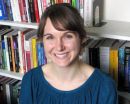(Press-News.org) When it comes to managing boundaries between work responsibilities and home life, technology is our "frenemy."
Technology, specifically mobile technology, can be alternately used to maintain, erase or manage home and work boundaries along a spectrum.
That's according to ongoing research by the University of Cincinnati to be presented June 17 at the Work and Family Researchers Network Conference in New York City by Stacie Furst-Holloway, UC associate professor of psychology. Co-authors with Furst-Holloway on the research are Elaine Hollensbee, associate professor of management; Suzanne Masterson, associate professor of management; Sung Doo Kim, doctoral student in management; Daniele Bologna, doctoral student of psychology, all of UC; and Therese Sprinkle, assistant professor of management at the University of Dallas.
In ongoing research, titled "Strategic Use of Mobile Technology to Manage the Work-Family Boundary," the team has found that full-time working employees can engage in several strategies when using technology to manage work-home boundaries. These include
Collocation, which occurs when an individual reports being physically present in one domain while cognitively and behaviorally engaged in both domains. This may include engaging in both work and personal tasks while in the home domain, e.g., doing laundry in the midst of a work project or responding to a work-related e-mail while attending a child's sports event.
Distancing, which occurs when an individual either turns off the technology or changes the setting to make oneself unavailable in one domain when engaged in the other.
Crossing, which connotes when an individual uses technology as an aid in moving from one domain to another. As an example, an individual may use mobile communications technology to bridge between work and home domains by accessing work e-mails via a laptop or smartphone near the end of the workday to respond to a request or complete a task before becoming fully engaged in the home domain.
According to Furst-Holloway, "These strategies were often perceived as a help in navigating work-home boundaries. For instance, with collocation, an employee might be in the same physical space as a spouse, being present when needed for the personal relationship, but alternating that with work completion. It allows for greater perceived control of work flow and information required to be better prepared upon returning to the office."
She added that "crossing" was perceived as being similarly helpful, providing a bridge for smooth travel between domains and making passages between one domain and another easier.
However, technology was also perceived as a hindrance to being fully present in either domain due to its addictive potential.
These findings were derived from in-depth, qualitative interviews of 33 working professionals. Just over half of these were full-time employees of a Cincinnati regional healthcare facility, while the rest were full-time employees (working for a variety of firms) enrolled in a part-time MBA program at UC. All were interviewed relative to their use of technology as well as their perceptions, preferences and experiences in regard to work-home boundaries.
The next step in this research will consist of a quantitative survey of approximately 500 full-time employees regarding self perceived outcomes of using the above strategies, the frequency with which employees use the above strategies, the impact of these strategies on work and life outcomes, and how others, such as supervisors, coworkers, and even significant others perceive an employee's use of mobile communications technology.
INFORMATION:
In managing boundaries between work and home, technology can be both 'friend' and 'foe'
2014-06-16
ELSE PRESS RELEASES FROM THIS DATE:
University of Tennessee discoveries could help neutralize chemical weapons
2014-06-16
KNOXVILLE—Researchers at the University of Tennessee, Knoxville, are a step closer to creating a prophylactic drug that would neutralize the deadly effects of the chemical weapons used in Syria and elsewhere.
Jeremy Smith, UT-ORNL Governor's Chair and an expert in computational biology, is part of the team that is trying to engineer enzymes—called bioscavengers—so they work more efficiently against chemical weapons. The work is a joint effort between scientists at UT, Oak Ridge National Laboratory and a French national laboratory in Grenoble. Their study was published ...
Migratory birds help spread plant species across hemispheres
2014-06-16
A new study out of the University of Connecticut demonstrates for the first time how some plants travel not just across the backyard, but as far as from Northern to Southern hemispheres on the wings of migratory birds.
The findings, published in the online journal PeerJ, offer critical insight into the ecology and evolution of plants that are represented across both continents of the Americas.
The study found 23 regenerative plant diaspores – plant seeds or spores – trapped in the feathers of migratory birds leaving the Arctic harbor for South America.
Although wind ...
Vitamin A derivative potentially treats type 2 diabetes and prevents its complications
2014-06-16
At a time when obesity, type 2 diabetes, and their complications are a veritable epidemic worldwide, researchers at the University of Montreal and CHUM Research Centre (CRCHUM) recently demonstrated the potential of retinoic acid (RA), a derivative of Vitamin A, in treating obesity and type 2 diabetes and preventing their cardiovascular complications. The findings were presented June 6, 2014 at the Annual Conference of the Canadian Nutrition Society in Saint John's, Newfoundland.
"In obese and insulin resistant mice, retinoic acid reduces the risk of cardiac apoptosis, ...
Researchers use virus to reveal nanopore physics
2014-06-16
PROVIDENCE, R.I. [Brown University] — Nanopores may one day lead a revolution in DNA sequencing. By sliding DNA molecules one at a time through tiny holes in a thin membrane, it may be possible to decode long stretches of DNA at lightning speeds. Scientists, however, haven't quite figured out the physics of how polymer strands like DNA interact with nanopores. Now, with the help of a particular type of virus, researchers from Brown University have shed new light on this nanoscale physics.
"What got us interested in this was that everybody in the field studied DNA and ...
Strokefinder quickly differentiates bleeding strokes from clot-induced strokes
2014-06-16
The results from the initial clinical studies involving the microwave helmet Strokefinder confirm the usefulness of microwaves for rapid and accurate diagnosis of stroke patients. This is shown in a scientific article being published on June 16. Strokefinder enables earlier diagnosis than current methods, which improves the possibility to counteract brain damage.
In the article, researchers from Chalmers University of Technology, Sahlgrenska Academy and Sahlgrenska University Hospital present results from the initial patient studies completed last year. The study included ...
E-cigarettes far less harmful than cigarettes, says researcher at INFORMS Conference
2014-06-16
A London School of Economics researcher examining the public and private dangers of drugs argues against demonizing e-cigarettes in a presentation being given at a conference of the Institute for Operations Research and the Management Sciences (INFORMS). He also calls on public officials to recognize that alcohol causes greater harm than other recreational drugs and more public attention should be paid to controlling its harmful effects.
Lawrence D. Phillips, an emeritus professor at the London School of Economics, will present his research group's findings about the relative ...
Most millennial moms who skip college also skip marriage
2014-06-16
Waiting until marriage to have babies is now "unusual" among less-educated adults close to 30 years old, Johns Hopkins University researchers found.
"Clearly the role of marriage in fertility and family formation is now modest in early adulthood and the lofty place that marriage once held among the markers of adulthood is in serious question," sociologist Andrew J. Cherlin said. "It is now unusual for non-college graduates who have children in their teens and 20s to have all of them within marriage."
Among parents aged 26 to 31 who didn't graduate from college, 74 ...
Regenerating our kidneys
2014-06-16
Doctors and scientists have for years been astonished to observe patients with kidney disease experiencing renal regeneration. The kidney, unlike its neighbor the liver, was universally understood to be a static organ once it had fully developed.
Now a new study conducted by researchers at Sheba Medical Center, Tel Aviv University and Stanford University turns that theory on its head by pinpointing the precise cellular signalling responsible for renal regeneration and exposing the multi-layered nature of kidney growth. The research, in Cell Reports, was conducted by principal ...
WSU researchers develop fuel cells for increased airplane efficiency
2014-06-16
PULLMAN, Wash.–Washington State University researchers have developed the first fuel cell that can directly convert fuels, such as jet fuel or gasoline, to electricity, providing a dramatically more energy-efficient way to create electric power for planes or cars.
Led by Professors Su Ha and M. Grant Norton in the Voiland College of Engineering and Architecture, the researchers have published the results of their work in the May edition of Energy Technology. A second paper on using their fuel cell with gasoline has been accepted for publication in the Journal of Power ...
Sleep quality and duration improve cognition in aging populations
2014-06-16
EUGENE, Ore. -- (June 16, 2014) -- Maybe turning to sleep gadgets -- wristbands, sound therapy and sleep-monitoring smartphone apps -- is a good idea. A new University of Oregon-led study of middle-aged or older people who get six to nine hours of sleep a night think better than those sleeping fewer or more hours.
The study, published in the June issue of the Journal of Clinical Sleep Medicine, reaffirms numerous small-scale studies in the United States, Western Europe and Japan, but it does so using data compiled across six middle-income nations and involving more than ...



